Flash back to this time last year. Think of all the things we didn't know about the quarterback position alone. What was Clemson's plan regarding Kelly Bryant and Trevor Lawrence? Georgia's plan with Jake Fromm and Justin Fields? Notre Dame's with Brandon Wimbush and Ian Book? Was Tua Tagovailoa truly ready to be a star at Alabama? How much might Oklahoma's offense regress with Kyler Murray replacing Baker Mayfield? The quarterback situation among contenders is a lot more stable this time around, but every team in the country still has questions to answer.
Granted, the magnitude or likelihood of some questions can change, but the pure number of questions we have about a team says a lot. If you simply count the "ifs" (if this happens, if that happens) it takes to turn a team into a true national title contender, that drops some major hints about the teams most likely to make deep runs.
Below are the 17 teams with title odds better than +10000 per Caesars Sportsbook, sorted by the number of "ifs" it takes to make each a true title contender.
A quick note: We're not going to waste time with things like "If their quarterback stays healthy" or "If the injury bug doesn't devastate a certain unit before a key game." Those things are obvious and apply to every team in the country. For the most part, we're not going to focus on schedules either. We're focused only on the quality of the team at hand.
Jump to a team:
Alabama | Clemson | Georgia | Ohio State | Oklahoma | LSU | Michigan | Texas | Oregon | Florida | Washington | Notre Dame | Texas A&M | Auburn | Wisconsin | Miami | Nebraska
Two ifs
Alabama (+240 national title odds)
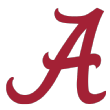
If ... the secondary cuts down on the glitches. Before 2018, Alabama's defense had graded out worse than its offense, per S&P+, just one time under Nick Saban (2010). That year, the Crimson Tide suffered a few too many big plays, allowing 16 passes of 30-plus yards, 57th in FBS. They were ultra-young in the secondary, led in part by a freshman (Dee Milliner) and a couple of sophomores (Dre Kirkpatrick and Robert Lester).
In 2011, with better experience, they allowed just seven passes of 30-plus yards and improved to first in defensive S&P+. It wouldn't be particularly surprising if something similar happened now that strong safety Xavier McKinney is no longer a sophomore and corner Patrick Surtain II is no longer a freshman. Still, it needs to happen because, as we saw in last season's national title game, Clemson's receiving corps had a massive advantage against Alabama's secondary and exploited it ruthlessly.
If ... Steve Sarkisian can make a difference in the red zone. Bama's latest offensive coordinator, Sarkisian, comes from Atlanta, where his Falcons struggled mightily in the red zone in 2017 and did just fine in 2018. Maybe he can find a couple of extra-magical playcalls to help out a Tide offense that was ultra-efficient over most of the field (first in overall offensive success rate) but labored near the goal line (68th in success rate inside the opponent's 10). That, too, was awfully costly in the national title game.
* - S&P+ is the tempo- and opponent-adjusted efficiency measure I created at Football Outsiders in 2008. Alabama has finished either first or second overall in this predictive measure every year since 2009.
** - Success rate is like an on-base percentage for football. For my version of success rate, every play is deemed a success or non-success by the following definition: gaining 50 percent of necessary yardage on first down, 70 percent on second down, or 100 percent on third or fourth down.
Clemson (+250)

If ... there's no hangover. Teams often don't have a lot of fun in their quests to repeat. Nick Saban's Alabama has pulled it off only once, after all (2011-12), and some of the most no-brainer repeat bids in recent years -- 2015 Ohio State, 2014 Florida State, 2009 Florida -- were frustrating and eventually unsuccessful grinds. It's hard keeping all the arrows pointed in the right direction for a second full season.
If ... young defensive linemen get up to speed quickly. No one is going to doubt either the defensive line talent Dabo Swinney is able to attract or his staff's ability to get the most out of their guys. But anytime you lose this much talent in a single unit (No. 4 NFL draft pick Clelin Ferrell, No. 13 pick Christian Wilkins, No. 17 pick Dexter Lawrence and No. 117 pick Austin Bryant, plus another rotation piece in Albert Huggins), that means a ton of new roles for new players.
Sophomore Xavier Thomas is now the wily veteran of the unit, and while there are plenty of former blue-chippers in the defensive line meeting room -- junior Justin Foster, sophomore Jordan Williams, redshirt freshmen K.J. Henry and Justin Mascoll, incoming freshman Tyler Davis -- this is still a green unit. And considering maybe the two most losable games on the schedule pop up in the first three weeks (Texas A&M on Sept. 7, at Syracuse on Sept. 14), the line will be tested pretty quickly.
Three ifs
Georgia (+650)
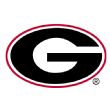
If ... James Coley can make a difference in the red zone. Everything above about Bama's goal-line issues? Multiply it by a couple of orders of magnitude, and it applies to Kirby Smart's Dawgs. Georgia was fifth in overall offensive success rate ... and 109th inside the 10. Remember that series against Florida, in which UGA had five consecutive snaps from the Gators' 1 (seven including penalties), gained zero yards, and kicked an 18-yard field goal? The entire season wasn't that bad, but that certainly distilled the issue. Coley moved from co-coordinator to sole coordinator when Jim Chaney left for Tennessee. He can top his predecessor by showing just a bit more creativity when a touchdown is on the line.
If ... Dan Lanning can dial up pressure. In theory, anyone hoping to win the national title will face the prospect of beating both Alabama and Clemson. Georgia theoretically might have to do the former twice. That's an almost impossible task, but any chance you've got of pulling it off requires a pass rush. Georgia ranked just 76th in sack rate last season, and the only Dawg who recorded more than two sacks (Jack linebacker D'Andre Walker) is gone. Recent recruiting has produced plenty of pass-rushing options -- among others, sophomore and 2018 reserve Channing Tindall had two sacks among his 9.5 tackles -- but someone's got to step up, and Lanning's scheme needs to be of assistance.
If ... the defensive front is a little less flexible. Thanks to Deandre Baker & Co., Georgia was still awesome against the pass even with the iffy pass rush. The run defense was strangely mediocre, though. Georgia ranked just 67th in rushing marginal efficiency allowed and got beat up by opposing run games in both regular-season losses: LSU's Clyde Edwards-Helaire rushed for 145 yards on 19 carries (quarterback Joe Burrow added 89 yards in 10 non-sack rushes), and Alabama's Damien Harris and Josh Jacobs combined for 135 yards on 17. There's too much raw talent up front for Georgia to lose the battle in the trenches.
Ohio State (+900)

If ... Justin Fields lives up to blue-chip hype ... and doesn't get hurt. I know, I said I wasn't going to mention QB injuries. But considering what else Ohio State has on the roster besides the sophomore Georgia transfer -- former WVU backup Chris Chugunov, former Kentucky backup Gunnar Hoak, and that's about it -- an injury here would be absolutely devastating, more than for other top teams.
Fields was an all-world recruit in 2018, and Georgia used him in awfully confusing ways last year. To keep him involved, the Dawgs would periodically send him onto the field for one snap, usually a zone read. Wasteful. (We won't even talk about the fake punt.)
Fields' full-season stats (with most of the passing numbers coming in garbage time) were excellent: 27-for-39 passing, 7.7 yards per non-sack carry. But now he's got to throw meaningful passes, all while wrapped in bubble wrap.
If ... the Ohio State run game becomes the Ohio State run game again. In 2017, JK Dobbins and Mike Weber gained 2,029 yards on 295 carries. In 2018, they gained 2,007 ... on 402. Without much of a run threat from Dwayne Haskins, the Buckeyes' run game was a lot more basic, and it showed.
How Ryan Day uses Fields will be fascinating because he is extremely mobile, and he could be exactly what last year's run game was missing ... if you can actually risk him running the ball and taking more hits. Dobbins could use the help.
If ... the defense suffers fewer catastrophes. Ohio State's defense didn't suffer glitches in 2018; it suffered Armageddon. The Buckeyes allowed 39 gains of 30-plus yards, almost as many as they allowed in 2016 and 2017 combined (42). And a lot of these breakdowns happened on passing downs -- second-and-8 or more, third-or-fourth-and-5 or more -- in which the defense is supposed to have the advantage. With juniors and seniors manning the secondary instead of sophomores and juniors, the excuses are minimal.
Oklahoma (+1200)

If ... the secondary gets more aggressive. Over the past three years, OU has fallen from 17th in Def. S&P+, to 31st, to 43rd, to 84th. Lincoln Riley fired coordinator Mike Stoops in mid-2018, and interim coordinator Ruffin McNeill failed to stop the bleeding. Now it's Alex Grinch's turn to give it a shot.
It starts with the secondary. OU allowed a 65 percent completion rate last year (118th in FBS) and ranked 128th in passing marginal efficiency. That's not bad, it's horrible. It was at least partially driven by youth -- five of the secondary's top seven tacklers were freshmen or sophomores -- and some of those youngsters held their own at times (corner Tre Brown had six tackles for loss and 12 pass breakups). But the need for improvement is obvious.
If ... the defensive front gets more disruptive. The secondary wasn't the only problem, obviously. OU just couldn't do anything to knock opponents off script. The secondary was overwhelmed, and the front six wasn't much better: The Sooners ranked 99th in sack rate and 106th in stuff rate (run stops at or behind the line). Riley has upgraded recruiting of late, and there are plenty of young former blue-chippers roaming in that front six. But senior linebacker Kenneth Murray and sophomore end Ronnie Perkins are the only known playmakers. That must change.
If ... Jalen Hurts shows he can go off script occasionally. OU has ranked No. 1 in Off. S&P+ for three years running. The Sooners' offense has had to be amazing to continue winning with a rapidly regressing defense.
After brilliant performances from Baker Mayfield and Kyler Murray, it's now time for a third transfer QB to come up big in Riley's offense: Alabama's Jalen Hurts. Hurts was ultra-efficient in Tuscaloosa, but he was a bit of an automaton. Since he always made the right choice, based on his reads, good defenses always knew what choice he would make in given situations. And if they had the athleticism to deal with it -- as Clemson did in 2016 and Auburn and Georgia did in 2017 -- they could render Hurts inefficient.
Riley's system will do most of the work, and Hurts' short-pass accuracy and legs will move the ball against most teams. But an athletic defense like Texas' could hem him in if he doesn't have the same type of playmaker spark Murray and Mayfield possessed.
LSU (+3000)
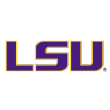
If ... Joe Burrow's late-season growth was real. In his first nine games as LSU's starting quarterback, Burrow, an Ohio State transfer, completed just 53 percent of his passes, had a 114.3 passer rating and took few chances. Not good enough.
Over the final four games of the season, however, Burrow blossomed. Completion rate: 67 percent. Passer rating: 173.5. Sure, two of those games were against QB-friendly Arkansas and Rice defenses, but two were against Texas A&M and UCF, too. Plus, even against Southeastern Louisiana and Louisiana Tech earlier in the year, he hadn't posted numbers like these. He returns this fall, as do his top five targets.
If this was a real breakthrough, and not just a product of limited defenses, then this could be the most exciting LSU offense since Zach Mettenberger was throwing to OBJ and Jarvis Landry.
If ... the LSU run game becomes the LSU run game again. Like Burrow's former team, Ohio State, LSU was strangely mediocre at one of the things it's best known for: running the ball. The Bayou Bengals were just 92nd in rushing marginal efficiency and 91st in stuff rate, frequently putting Burrow in awkward downs and distances. Leading rusher Nick Brossette is gone, but backup Clyde Edwards-Helaire was more efficient, and those responsible for all but nine of last year's offensive line starts return.
If ... Kristian Fulton and Kary Vincent Jr. can get greedy. Dave Aranda's defense returns four of its five primary linemen, seven of eight linebackers, and five of its top seven DBs. The Tigers do have to replace two top-50 draft picks, however, and while linebacker Devin White's production can probably be mostly accounted for by simply keeping sophomores Micah Baskerville and K'Lavon Chaisson healthy, considering how dominant LSU's pass defense was, losing corner Greedy Williams hurts.
Granted, Vincent and Fulton, a junior and senior respectively, are former blue-chippers and have been in plenty of battles. But the bar is high here.
Four ifs
Michigan (+1500)
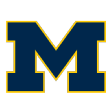
If ... Josh Gattis brings some pep and unpredictability to Ann Arbor. Jim Harbaugh hired offensive coordinator Josh Gattis from Alabama to clean off the rust and ossification that had beset the Michigan attack at times. The Wolverines were both predictable (22nd in standard downs run rate) and plodding (123rd in adjusted pace). And despite their run-heavy approach, the Wolverines couldn't actually run the ball all that well. They were 84th in rushing marginal efficiency, and in three losses Michigan backs averaged just 3.8 yards per carry.
If ... Shea Patterson finds a No. 1 receiver. Patterson's full-season numbers were decent (65 percent completion rate, 12.4 yards per completion, 82.0 QBR), but that's mostly because he torched lesser opponents. In games against more evenly matched opponents, the passing game was harmless.
Against five opponents that finished the year ranked, Patterson still completed 62 percent of his throws, but at just 11.3 yards per completion. It was 10.3 in three losses. Donovan Peoples-Jones averaged 18.4 yards per catch against unranked foes and 8.7 against ranked. Be it Peoples-Jones, Nico Collins, a finally healthy Tarik Black, or someone else, the Wolverines need a playmaker against the teams with the strongest pulse.
If ... blitz downs are a bit less all-or-nothing. Don Brown's defense was again mostly dominant in 2018, ranking ninth in Def. S&P+. UM has been in the top 10 in all three of his seasons in Ann Arbor. But while his attack usually worked, it failed at key times. On blitz downs (which I define as second-and-super-long and third-or-fourth-and-5 or more), Michigan ranked a solid 15th in success rate and fifth in sack rate. But the Wolverines also gave up 20-plus yards on 8.5 of blitz downs, 69th overall. Florida enjoyed gains of 53, 30 and 28 on blitz downs, and Ohio State enjoyed big gains on both blitz downs and regular downs.
If ... the Big House does its part. Michigan gets both Ohio State and Michigan State at home, which sounds great except for the fact that Harbaugh is 0-4 against these two rivals in Ann Arbor. An enormous home crowd can become an anxiety-heavy disadvantage when an aura of "Here we go again" wafts in.
Texas (+2000)

If ... Texas can figure out how to run the ball without getting Sam Ehlinger hit so much. In Texas' most impressive wins of 2018 -- 37-14 against USC, 48-45 against Oklahoma and 28-21 against Georgia in the Sugar Bowl -- Ehlinger was a battering ram, rushing more than 17 times per game, not including sacks. Basically every third down was "Hey, Sam, get to the sticks." In the other 11 games on the schedule, however, he rushed under eight times per game. Head coach Tom Herman knew he couldn't let his QB take that many hits over a potential 14-game schedule.
The problem: When Ehlinger wasn't running, Texas' run game was poor -- average efficiency with no big plays whatsoever. Can that change?
If ... big-play blue-chippers can actually make big plays. Texas gained 30-plus yards just 26 times, tied for 77th in FBS with offenses like Boston College's and Navy's, both of which played fewer games. Worse yet, the Horns didn't make a single 50-yard gain all year. You know what else would allow Ehlinger to avoid taking hits and wearing down? Easy points.
If ... a super-young secondary is ready to not only hold the fort, but improve. Continuity in the secondary correlates pretty strongly with year-to-year improvement and regression, and Texas has to replace three DB mainstays in nickel P.J. Locke III and corners Kris Boyd and Davonte Davis.
With last year's top three pass-rushers gone, as well, there's a lot of pressure on high-upside sophomores like safeties Caden Sterns and B.J. Foster and corners Anthony Cook and Kobe Boyce to play like grizzled veterans. Can they?
If ... a Tom Herman team can play every game as an underdog. Herman is the ultimate big-game coach. In four years as a head coach, he is 10-6 straight-up as an underdog and 13-2-1 against the spread. As a one-possession favorite, he's 9-2 straight-up and 7-3-1 against the spread. As a healthy favorite, however? He's 21-5 straight-up (a worse win percentage than as a one-score favorite) and 8-17-1 against the spread.
Just last year, Texas beat Oklahoma and Georgia, lost to Maryland, and thought hard about losing to Kansas and Tulsa. Title teams don't play like title teams only three or four times a year, or only when their QB is the entire run game.
Oregon (+3000)

If ... Oregon learns to handle success. After going just 11-14 in 2016-17, Mario Cristobal's Ducks started last season with ambition, going 5-1 and overcoming a heartbreaking loss to Stanford with a 30-27 overtime upset of Washington.
After the Washington win, however, they lost focus. They fell behind 27-0 to Washington State the next week and lost by 14; then, even worse, they got blown out 44-15 by a mediocre Arizona. They rebounded from there, but those two weeks defined the season as much or more than the upset win. That can't happen again.
If ... Justin Herbert turns flashes of brilliance into an actually brilliant year. Herbert was considered the top QB prospect in the 2019 draft for much of the 2018 season, but he elected to return to Eugene for one more season. That will give him a chance to work on, among other things, his attention span.
Herbert completed 69 percent of his passes against Stanford, Cal and Washington, then completed 54 percent against Washington State, Arizona and UCLA. He threw four interceptions in nine conference games, and threw four in two games against Bowling Green and San Jose State. Herbert is a sports car that is nearly, but not quite, street legal.
If ... Oregon starts making an Oregon level of big plays again. The offensive potential is obvious, but the Ducks enjoyed just 30 gains of 30-plus yards in 2018, 50th in FBS. And that was with receiver Dillon Mitchell, by far their best big-play threat. Mitchell is now a Minnesota Viking.
If ... a young pass rush becomes a good pass rush. Oregon's defensive front wasn't disruptive enough in 2018, ranking 83rd in sack rate and 72nd in stuff rate. The result: Opponents enjoyed extremely manageable third downs. Now, after losing linebacker Justin Hollins and safety Ugo Amadi, the Ducks must replace two of last year's top three producers of havoc plays (tackles for loss, passes defensed, forced fumbles).
New defensive coordinator Andy Avalos had a pretty havoc-friendly scheme at Boise State, but if Oregon's disruptiveness improves, it's probably because a few youngsters and/or newcomers -- sophomores like safety Jevon Holland and linebacker Isaac Slade-Matautia, freshmen like end Kayvon Thibodeaux, ESPN's No. 1 recruit, and linebacker Mase Funa -- enjoyed breakthroughs.
Florida (+3000)

If ... late-2018 Feleipe Franks is the permanent Feleipe Franks. Florida's junior quarterback has already lived quite a few football lives in Gainesville. He was the too-much-too-soon rookie behind center for the death rattle of the Jim McElwain era. He was the up-and-down sophomore who ushered in the Dan Mullen era by alternating between strong performances and shaky ones.
Finally, he was the guy who helped Florida's offense dominate the last four games of 2018. He completed 65 percent of his passes with eight TDs to no INTs (plus 54 rushing yards per game with a 50 percent rushing success rate) as Florida averaged 45 points per game against South Carolina, Idaho, FSU and Michigan. If that is the Franks who shows up in 2019, then the Gators could put a serious scare into Georgia in the SEC East race.
If ... Franks has a go-to weapon. In three losses last year, leading receivers Van Jefferson and Trevon Grimes combined to catch a ghastly 11 of 32 passes for 114 yards. When the Gators needed to make a play through the air, Franks didn't know whom he could trust.
If ... the offensive line doesn't regress too much. After years of underachievement, the Gators' line was downright good in 2018, paving the way for Florida to rank 14th in rushing marginal efficiency, 20th in stuff rate and first in passing downs sack rate. But now it has to replace four starters. Some combination of veteran reserves and young blue-chippers has to at least replicate last year's steadiness.
If ... Todd Grantham's defense tamps down the recklessness a hair. All-out aggression has been Grantham's calling card through defensive coordinator stops with the Cleveland Browns, Georgia, Louisville and now UF. When it works, it works. But when it didn't work in 2018, UF got gashed.
The Gators ranked 12th in FBS in sack rate (9.2 percent) and forced plenty of third-and-longs (7 yards to go or more), but opponents converted third-and-long 26 percent of the time (84th). Grantham needs a new ace pass-rusher with Jachai Polite now a New York Jet -- Louisville transfer Jon Greenard, perhaps? -- though a secondary no longer heavily reliant on freshmen and sophomores could be capable of holding on to coverage for a moment longer. Either way, the sacks-to-big-plays ratio needs to improve.
Washington (+3000)
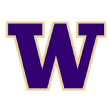
If ... Jacob Eason has developed behind the scenes. Last we saw the former all-world recruit, Eason was completing 55 percent of his passes with a 55.0 QBR as a true freshman tossed into the deep end for Kirby Smart's first Georgia team. He was in an impossible spot and struggled. He got hurt and backed up Jake Fromm in 2017, then sat out as a transfer in 2018.
Now Eason succeeds, in Jake Browning, a four-year starter who threw for 12,540 yards and won 39 games. UW fans took Browning for granted after a while, but Eason's upside is obvious.
If ... UW is no longer atrocious at finishing drives. Despite Myles Gaskin, Salvon Ahmed and a stellar tight end corps, the Huskies averaged just four points per scoring opportunity (first downs inside the opponent's 40) last year, 116th in FBS. They weren't just bad, they were among the worst in the country.
If ... a new secondary clears a high bar. In open-play situations (which we'll define as snaps that took place between the offense's 10 and defense's 30), Washington allowed gains of 20-plus yards just 4.6 percent of the time, eighth in FBS. The backbone of this defense -- safeties Taylor Rapp and JoJo McIntosh, inside linebacker Ben Burr-Kirven -- was ridiculously sturdy and glitch-free. But all three of those players are gone, as are corners Byron Murphy and Jordan Miller.
UW has gotten used to replacing star defenders without a hiccup, and the Huskies still have stars like corner Myles Bryant and dominant linemen Levi Onwuzurike and Benning Potoa'e. But the secondary has to replace a few stars, and that's always scary.
If ... Chris Petersen finds where he misplaced his close-game karma. Over his first four years and change at Boise State, Petersen's Broncos went 10-2 in one-possession finishes. But starting with BSU's classic loss to Nevada and Colin Kaepernick, he lost six of his last 10 such games in Boise. He's 10-13 in five years at UW; all six of the Huskies' losses the past two years were by a touchdown or less. Just think what they could have done if they could have finished drives.
Notre Dame (+3500)
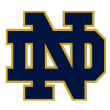
If ... losing WR Miles Boykin doesn't mean losing big pass plays. It was primarily Boykin or nothing as far as big pass plays were concerned last year. He's now with the Baltimore Ravens, and while seniors Chase Claypool and Chris Finke are outstanding possession options, the Irish need a field stretcher for quarterback Ian Book.
Junior Michael Young and sophomore Kevin Austin Jr. each averaged 18 or more yards per catch, but they combined for just 12 catches. Can they maintain explosiveness with a bigger sample? What about speedy redshirt freshmen Braden Lenzy and Lawrence Keys III?
If ... the run game improves, perhaps dramatically. Dexter Williams gave the run game a bit of big-play pop that didn't exist with Tony Jones Jr. and Jafar Armstrong as the primary backs. But even with Williams, the Irish still ranked an egregious 92nd in rushing marginal efficiency. Almost a quarter of their non-sack carries last year (24.1 percent) were stuffed at or behind the line (121st in FBS).
Coordinator Chip Long strives for balance, but all balance did was create a bunch of second-and-10s. Will life be any different with Jones, Armstrong and basically the same line this time around?
If ... the red zone offense improves, run game or no run game. Because of the shaky run game, Notre Dame wasn't very efficient offensively. But the Irish got definitively less efficient as they got closer to the end zone. They ranked 100th in success rate between the opponent's 21 and 30, 96th between the 11 and 20, and 98th on first-and-goal. Against Clemson, they generated three scoring opportunities ... and scored three points.
If ... the front seven finds a new playmaker. Brian Kelly's defenses typically do a great job of preventing big plays. With safeties Alohi Gilman and Jalen Elliott returning, things look good in that regard, even without corner Julian Love.
A little bit more disruption would go a long way, though. The Irish ranked only 55th in sack rate and 60th in tackles for loss, and now they have to replace three of the five players who logged more than five TFLs last season. Ends Khalid Kareem and Julian Okwara are exciting, but be it senior Asmar Bilal, sophomore Shayne Simon or someone else, Notre Dame needs another guy capable of beating blockers and making plays in the front seven.
Texas A&M (+5000)
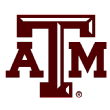
If ... the newbies provide immediate, quality depth. Jimbo Fisher signed ESPN's No. 3 class in the country in 2019, with at least one new blue-chipper in nearly every unit on the field. If there's truly a title run in the cards, Fisher will need an infinite number of immediate, strong contributors -- his Aggies need depth more than any team has ever needed it before.
A&M has one of the most ridiculous schedules you'll ever see. In terms of S&P+ projections, the Aggies play each of the top four teams in the country, three away from home. They play all the West heavyweights, they draw Georgia and South Carolina (which also plays each of the top four) in cross-division play, and they visit defending national champion Clemson in nonconference play. They play two top-10 teams in September, two in October and two in November. An excellent team would go 8-4 against this schedule. Giving A&M +5000 odds is a massive compliment.
If ... the passing game produces more easy points. The Aggies produced only 15 passes of 30-plus yards in 2018. This created a need for sustained drives and solid red zone execution, but A&M averaged just 4.5 points per scoring opportunity (80th in FBS). Sure, "better red zone execution" is also on the to-do list, but while receivers like Quartney Davis and Camron Buckley flashed big-play potential, and there's a boatload of speedy blue-chippers on the way, someone needs to stretch the field.
If ... the Crew stops getting Wrecked. The A&M defense was aggressive and efficient, but when opponents did win a given play, they didn't do it with a mere 7-yard gain. The Aggies were 120th in marginal explosiveness allowed and allowed 31 gains of 30-plus yards (84th). And that was with starting safeties Donovan Wilson and Deshawn Capers-Smith, both of whom are now gone.
If ... a new front seven doesn't mean a loss of havoc. Defensive coordinator Mike Elko's first A&M defense ranked fifth in overall havoc rate; seven different Aggies defenders recorded at least seven tackles for loss. Unfortunately, six are gone. Plenty of raw talent remains, and even more is on the way. But not only do the Aggies need solid contributions from sophomores (end Tyree Johnson, tackle Bobby Brown III) and returnees from injury (end Micheal Clemons, linebacker Anthony Hines III), they need those guys to be downright awesome.
* - Havoc rate is a team's total tackles for loss, passes defensed (interceptions and breakups), and forced fumbles divided by total plays. You can break a team's havoc rate out by unit, too, to get an idea of where disruption is coming from. A&M ranked 13th in defensive line havoc rate, 61st at linebacker, and 13th in the secondary.
Five ifs
Auburn (+5000)
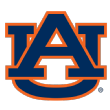
If (x2) ... a freshman quarterback doesn't play like a freshman. We're going to count this as two ifs because, depending on who wins the Wisconsin and Miami battles, Auburn might be the only team on this list to enter 2019 with a new starting QB.
The job of replacing Jarrett Stidham will likely go to one of two recent blue-chippers -- either true freshman Bo Nix or redshirt freshman Joey Gatewood. In a sea of experienced signal-callers, Auburn is starting from behind.
If ... the offensive line takes a mulligan. Auburn's reconstructed line was disappointing in 2018; the Tigers ranked just 69th in rushing marginal efficiency, and on blitz downs, Stidham was sacked 12.5 percent of the time (94th). Mind you, no Auburn lineman boasted more than seven career starts at AU this time last year. In 2019, all six linemen in the primary rotation return. Five are seniors.
If ... a reconstructed receiving corps holds up. Ryan Davis and Darius Slayton combined for nearly 45 percent of last year's targets, but both are gone, leaving sophomore speedsters Seth Williams and Anthony Schwartz, 2017 contributors Will Hastings and Eli Stove (both of whom missed 2018 with knee injuries), a couple of transfers (Arizona State's Jay Jay Wilson and Youngstown State's Zach Farrar) and some duct tape. Continuity is huge in the passing game, and Auburn has absolutely none of it.
If ... the pass rush gets home. Gus Malzahn's hire of Kevin Steele as defensive coordinator has been an undeniable success. Auburn averaged a 39.7 Def. S&P+ ranking in Malzahn's first three seasons and has averaged 8.3 since Steele's hire. The Tigers were sixth last year, powered primarily by an ability to force third-and-longs and dominate in the red zone.
When they suffered a breakdown, however, it was an all-caps BREAKDOWN. On blitz downs, AU ranked just 54th in success rate and gave up a gain of 20-plus yards nearly 10 percent of the time (91st). The pass rush wasn't quite good enough, and an active secondary occasionally got burned.
The secondary could be outstanding, returning last year's top four tacklers, not to mention two cornerbacks (Noah Igbinoghene and Javaris Davis) who combined for 4.5 TFLs, three INTs and 19 breakups. But pass-rusher Nick Coe needs help up front.
Wisconsin (+5000)

If ... there is at least steadiness at QB. In 2017, Alex Hornibrook completed 62 percent of his passes with an 74.0 QBR. Amazing? No, but good enough to bring Wisconsin to within a touchdown of the College Football Playoff.
In 2018, Hornibrook regressed, got hurt, missed a few games and transferred to Florida State. Backup Jack Coan was horrible against Penn State and excellent against Purdue. The starting job will likely go to either Coan or blue-chip freshman Graham Mertz, one of the most hotly anticipated signees in school history. The QB's No. 1 job will be to stick the football in Jonathan Taylor's belly, but Wisconsin won big in 2017 in part because the passing game could shine when it needed to.
If ... third-and-medium is Wisconsin's friend. Wisconsin was decent on third-and-long (33rd in success rate) but ran into problems on third-and-medium (between 2 and 6 yards to go). Within that range, the Badgers ranked 110th in success rate. Some combination of predictable playcalling and bad QB decision-making ended a lot more drives than was necessary. To say the least, that has to improve.
If ... a new offensive line is the same old Wisconsin offensive line. The Wisconsin line is one of college football's greatest constants, but some versions are still better than others, and this year's has to replace an incredible quartet: All-America guards Michael Deiter and Beau Benzschawel, 2017 All-America tackle David Edwards and three-year starting tackle Jon Dietzen.
If ... the pass rush comes back. The Badgers' sack rate fell from 9.6 percent in 2017 to 5.0 percent, with opposing QBs both dealing with less pressure and finding open receivers a bit more easily.
Only linebacker Andrew Van Ginkel managed more than three sacks last year, and he's gone. The leading returnee, OLB Zack Baun, had 2.5. The secondary is far more experienced, and that should help, but someone in the front seven needs to get into the backfield.
If ... the run defense comes back, too, for that matter. UW's run defense was decent but took a clear step backward from 2017. And in four of the Badgers' five losses, opposing running backs had a field day, from BYU's Squally Canada and Aleva Hifo (16 carries for 163 yards) to Penn State's Miles Sanders (23 for 159).
Miami (+6000)
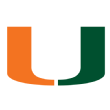
If (x2) ... there's explosive growth at the QB position. As with Auburn, we're counting this twice because Miami is starting from so far behind. Malik Rosier struggled mightily late in 2017, then alternated between struggling and getting benched in favor of N'Kosi Perry in 2018. Unfortunately, Perry wasn't any better.
New QBs coach and offensive coordinator Dan Enos arrives from Alabama tasked with either coaxing massive improvement out of Perry or handing the reins to Ohio State transfer Tate Martell or redshirt freshman Jarren Williams. If Miami is merely decent at QB, that makes this team's ceiling infinitely higher.
If ... the offensive line plays its part this time. A solid quarterback, handing to DeeJay Dallas and throwing to Jeff Thomas, Buffalo transfer K.J. Osborn, tight end Brevin Jordan and maybe a blue-chip freshman or two? That sounds tantalizing. But it works only if the line actually holds up. It was mediocre at best in 2018 (74th in stuff rate, 77th in sack rate) and now has to replace five of the seven players who started at least five games. New coaching, plus the addition of sought-after Butler grad transfer Tommy Kennedy, could help, but how much?
If ... the defensive line unearths a new playmaker or two. Again, some ifs are more likely to come to fruition than others. Given head coach Manny Diaz's track record, we can assume this one's probably fine. It still needs to happen, though.
In end Joe Jackson and tackle Gerald Willis III, Miami loses two linemen who combined for 32.5 tackles for loss, 13 sacks and six passes defensed last season. End Jonathan Garvin is back, and between veterans (end Scott Patchan, tackle Pat Bethel), transfers (Virginia Tech's Trevon Hill in particular) and youngsters (tackle Nesta Jade Silvera), there are certainly breakthrough candidates.
If ... the punting improves. This is the only special teams-related "if" on this list, but Miami's punting last year was dire. Returnee Jack Spicer averaged a nightmarish 32.9 net yards per kick, and between inefficient offense and terrible punting, Miami's defense faced the worst starting field position in the country. That the Hurricanes still allowed under 20 points per game tells you why Diaz, last year's defensive coordinator, got the head-coaching job when Mark Richt retired. But massive improvement is required here, either from Spicer or tattooed junior college transfer (and viral sensation) Louis Hedley.
Six ifs (and counting)
Nebraska (+4000)

If ... the Scott Frost Second-Year Miracle Leap happens twice. Let's face it: In the game of "One of these things is not like the others," Nebraska is the standout on this list. The other 16 teams we're talking about in this piece averaged 10.8 wins between them in 2018. Nebraska went 4-8. And while the Huskers certainly showed upside and improved late in the year, so did division mate Minnesota, which finished with a better record (7-6) and S&P+ ranking (45th vs. 49th) and returns more of last year's production than NU.
So really, the only reasons for Nebraska being given even semi-friendly title odds are (a) it's Nebraska (we always leap to proclaim a blue blood "BACK!!"), and (b) Scott Frost pulled off a second-year leap at UCF. That's not a lot to go on, but hey, anything's possible. Even if this isn't all that possible.
If we're treating NU as a legit contender, though, the Huskers get the ifs treatment all the same.
If ... Adrian Martinez pulls a McKenzie Milton-style sophomore leap. Milton went from intriguing to amazing in Frost's second year. Martinez, with his 65% completion rate and 6.7 yards per non-sack carry, certainly qualifies as intriguing, but the bar gets awfully high, awfully quickly if you're comparing yourself to Milton.
If ... new go-tos emerge in the skill corps. The Cornhuskers will attempt to take a huge step forward without a 1,000-yard rusher (Devine Ozigbo) and a 1,000-yard receiver (Stanley Morgan Jr.).
If ... the run defense goes from outright atrocious to good. NU was 102nd in rushing marginal efficiency allowed last year.
If ... a pass rush emerges. 112th in sack rate.
If ... the secondary improves dramatically despite losing last year's top three tacklers. You know what? We'll stop at six ifs, but I think you get the idea here. Barring another second-year miracle, this is not a national title contender.
